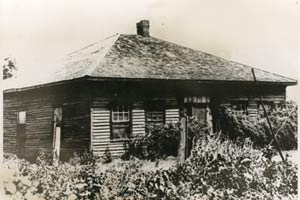Home Regions of OntarioSouthwest Ontario Region
Southwest Ontario Region
Communities in this region include Lowbanks, Dunnville, Port Maitland, Cayuga, Selkirk, Nanicoke, Hagersville, Port Dover, Simcoe, Delhi, Turkey Point, Long Point, Port Rowan, Port Ryerse, Port Burwell, Port Bruce, Port Stanley, Tillsonburg, Ingersoll, London, Lucan, St. Thomas, Strathroy, Grand Bend, Port Franks, Walpole Island, Wallaceburg, Wheatley, Leamington, Windsor, Amherstburg.
Windsor, Ontario was one of the first areas settled by Europeans as it was a southerly extension of the settlement of Fort Detroit. Eventually the city of London would surpass Windsor in population growth becoming the region's largest urban centre.
Although the region contains several larger cities, Southwestern Ontario is mainly an agricultural area. At one time tobacco was grown in the Tillsonburg, Simcoe and Leamington areas but most of all the tobacco farms have resorted to other cash crops. Leamington is well known for producing tomatoes. The area contains many dairy farms as well as beef and hog producing facilities.
The Talbot Settlement also played a key role in the early development of Southwestern Ontario. Thomas Talbot was instrumental in the early building of roads as well as enticing immigrants to Upper Canada to settle in the area.
Thomas Talbot emigrated to Canada in 1791, where he became aide-de-camp to John Graves Simcoe, Lieutenant-Governor of Upper Canada. After returning to England, Talbot convinced the government to allow him to implement a land settlement scheme along the shore of Lake Erie. His first selection of land for settlement was yarmouth Township but that application was denied.
 Talbot Settlement Homestead
Talbot Settlement Homestead
Talbot was awarded an initial 5,000 acres of land in Dunwich Township, in Elgin County. At that time the settlement which bears his name was an unbroken forest with the closest traces of civilization 60 miles east at Long Point.
He was granted 200 acres for every family he could locate there; 50 acres to be given to the new settlers and 150 acres to be held by Thomas Talbot, which he would in turn sell to any settlers wishing to expand their allotted properties.
One stipulation that Talbot demanded of these early settlers was in the first three years they clear 10 acres of land, construct a small dwelling and build a road along the front of their properties. The result of the road-making provision was that the settlement became interconnected with good roads, one of which would become known as the Talbot Road. By the late 1820s Colonel Thomas Talbot had organized the construction of a 480 kilometre (300-mile) long road linking the Detroit River and Lake Ontario.





